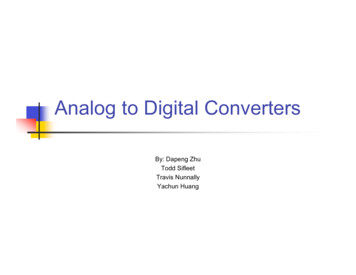
Transcription
Analog to Digital ConvertersBy: Dapeng ZhuTodd SifleetTravis NunnallyYachun Huang
Introduction of ADCBy: Dapeng Zhu What is ADC(Analog to Digital Converter) Why ADC is needed Application of ADC A/D conversion process
What is ADC An electronic integrated circuit whichtransforms a signal from analog (continuous)to digital (discrete) form.Analog signals are directly measurablequantities.Digital signals only have two states. Fordigital computer, we refer to binary states, 0and 1.
Why ADC is needed Microprocessors can only perform complexprocessing on digitized signals.When signals are in digital form they are lesssusceptible to the deleterious effects ofadditive noise.ADC Provides a link between the analogworld of transducers and the digital world ofsignal processing and data handling.
Application of ADC ADC are used virtually everywhere where ananalog signal has to be processed, stored, ortransported in digital form.Some examples of ADC usage are digital voltmeters, cell phone, thermocouples, anddigital oscilloscope.Microcontrollers commonly use 8, 10, 12, or16 bit ADCs, our micro controller uses an 8 or10 bit ADC.
ADC processOutput digitalsignalInput analogsignalSCuI′(t)Quantizing&EncodingS/H circuit2 steps Sampling and Holding (S/H) Quantizing and Encoding (Q/E) uI(t)Dn-1D1D0
Sampling andHolding Holding signal benefitsthe accuracy of the A/DconversionMinimum sampling rateshould be at least twicethe highest datafrequency of the analogsignalContinuousSignalSampling pulseSampled signalSampled andheld signal
Quantizing and EncodingResolution:The smallest change in analog signal that will result in a change inthe digital output.Vr!V N2V Reference voltage rangeN Number of bits in digital output.2N Number of states. V ResolutionThe resolution represents the quantization error inherent in theconversion of the signal to digital form
Quantizing and EncodingAnalog Signal Quantizing:Partitioning the reference signalrange into a number of discretequanta, then matching the inputsignal to the correct quantum. Encoding:Assigning a unique digital codeto each quantum, thenallocating the digital code to theinput signal.Digital outputin binary!V 1 V1!"# %&%'(&")* "* ,)'-.,. !V 0.5 V2
Accuracy of A/D ConversionThere are two ways to best improve the accuracy of A/Dconversion: increasing the resolution which improves the accuracy inmeasuring the amplitude of the analog signal.increasing the sampling rate which increases themaximum frequency that can be measured.
Accuracy of A/D ConversionLow Accuracy ImprovedResolutionResolution TimeTime
Types of A/D ConvertersBy: Todd Sifleet Dual Slope A/D ConverterSuccessive Approximation A/D ConverterFlash A/D ConverterDelta-Sigma A/D ConverterOther Voltage-to-frequency, staircase ramp or singleslope, charge balancing or redistribution, switchedcapacitor, tracking, and synchro or resolver
Dual Slope A/D Converter Fundamental components IntegratorElectronically Controlled SwitchesCounterClockControl LogicComparator
How does it workA dual-slope ADC (DS-ADC) integrates an unknown input voltage (VIN) fora fixed amount of time (TINT), then "de-integrates" (TDEINT) using aknown reference voltage (VREF) for a variable amount of time.The key advantage of this architecture over the single-slope is that the finalconversion result is insensitive to errors in the component values. That is, anyerror introduced by a component value during the integrate cycle will becancelled out during the de-integrate phase.
How Does it Work Cont. At t 0, S1 is set to ground, S2 is closed, andcounter 0.At t 0 a conversion begins and S2 is open, and S1is set so the input to the integrator is Vin.S1 is held for TINT which is a constantpredetermined time interval.When S1 is set the counter begins to count clockpulses, the counter resets to zero after TINTVout of integrator at t TINT is VINTINT/RC is linearlyproportional to VINAt t TINT S1 is set so -Vref is the input to theintegrator which has the voltage VINTINT/RC storedin it.The integrator voltage then drops linearly with aslop -Vref/RC.A compartor is used to determine when the outputvoltage of the integrator crosses zeroWhen it is zero the digitized output value is thestate of the counter.
Dual Slope A/D ConverterPros and ConsPROS Conversion result is insensitiveto errors in the componentvalues.Fewer adverse affects from“noise”High AccuracyCONS SlowAccuracy is dependent on theuse of precision externalcomponentsCost
Flash A/D Converter Fundamental Components (For N bit Flash A/D) 2N-1 Comparators2N ResistorsControl Logic
How does it work Uses the 2N resistors to form a ladder voltage divider, whichdivides the reference voltage into 2N equal intervals.Uses the 2N-1 comparators to determine in which of these 2Nvoltage intervals the input voltage Vin lies.The Combinational logic then translates the informationprovided by the output of the comparatorsThis ADC does not require a clock so the conversion time isessentially set by the settling time of the comparators and thepropagation time of the combinational logic.
Flash A/D ConverterPros and Cons PROSVery Fast (Fastest)Very simpleoperational theorySpeed is only limitedby gate andcomparatorpropagation delay CONSExpensiveProne to produceglitches in the outputEach additional bitof resolutionrequires twice thecomparators.
SIGMA-DELTA A/D ConverterMain Components Resistors Capacitor Comparators Control Logic DAC
How does it work Input is over sampled, and goes to integrator.The integration is then compared to ground.Iterates and produces a serial bit streamOutput is a serial bit stream with # of 1’s proportional to VinWith this arrangement the sigma-delta modulator automatically adjusts itsoutput to ensure that the average error at the quantizer output is zero.The integrator value is the sum of all past values of the error, so wheneverthere is a non-zero error value the integrator value just keeps building untilthe error is once again forced to zero.
Sigma-Delta A/D ConverterPros and Cons PROSHigh ResolutionNo need forprecisioncomponents CONSSlow due to oversamplingOnly good for lowbandwidth
ADC Types ComparisonADC Resolution ComparisonDual SlopeFlashSuccessive ApproxSigma-Delta051015Resolution (Bits)2025TypeSpeed (relative)Cost (relative)Dual SlopeSlowMedFlashVery FastHighSuccessive AppoxMedium – FastLowSigma-DeltaSlowLow
Successive Approximation ADC Circuit Uses a n-bit DAC to compare DAC and original analog results. Uses Successive Approximation Register (SAR) supplies anapproximate digital code to DAC of Vin. Comparison changes digital output to bring it closer to the inputvalue. Uses Closed-Loop Feedback Conversion
Successive Approximation ADCIs Vin ½ ADC range?VIN SARDAC0100100000000000If no, then test next bitProcess1. MSB initialized as 12. Convert digital value toanalog using DAC3. Compares guess toanalog input4. Is Vin VDAC Set bit 1 If no, bit is 0 and testnext bitOutputClosed-LoopVref
Output
Successive ApproximationDisadvantagesAdvantages Capable of high speedand reliable Medium accuracycompared to other ADCtypesGood tradeoff betweenspeed and costCapable of outputting thebinary number in serial(one bit at a time) format.Higher resolutionsuccessive approximationADC’s will be slowerSpeed limited to 5Msps
Successive ApproximationExampleExample 10 bit ADC Vin 0.6 volts (from analogdevice) Vref 1 volts Find the digital value of VinN 2n (N of possible states)N 1024Vmax-Vmin/N 1 Volt/1024 0.0009765625V of Vref (resolution)
Successive Approximation MSB (bit 9) Divided Vref by 2 Compare Vref /2 with Vin If Vin is greater than Vref /2 , turnMSB on (1) If Vin is less than Vref /2 , turnMSB off (0) Vin 0.6V and V 0.5 Since Vin V, MSB 1 (on)
Successive Approximation Next Calculate MSB-1 (bit 8) Compare Vin 0.6 V to V Vref/2 Vref/4 0.5 0.25 0.75VSince 0.6 0.75, MSB is turned offCalculate MSB-2 (bit 7) Go back to the last voltage that caused it to be turned on (Bit 9)and add it to Vref/8, and compare with VinCompare Vin with (0.5 Vref/8) 0.625Since 0.6 0.625, MSB is turned off
Successive Approximation Calculate the state of MSB-3 (bit 6) Go to the last bit that caused it to be turned on (In thiscase MSB-1) and add it to Vref/16, and compare it toVinCompare Vin to V 0.5 Vref/16 0.5625Since 0.6 0.5625, MSB-3 1 (turned on)
Successive ApproximationADC This process continues for all the remaining bits.
ATD10B8CV2 on MC9SI2CBy: Yuchun Huang
ADCADC PowerSupply
ATD10B8CV2 Features Resolution: 8/10-bitConversion Time: 7 µsec for 10-bitSuccessive Approximation ADC8-channel analog/digital input multiplexer Multiplexer: A device that can send several signals over a singleline.External Trigger Control (Sync. ADC with external events)New Features of ATD10B8CV2 Conversion Complete Interrupt Left/right justified, signed/unsigned result Programmable Sample time & resolution selection
ATD10B8CV2Modes & Operations Modes Stop Mode All clocks halt; conversion aborts; minimum recoverydelay Wait Mode Reduced MCU power; can resume Freeze Mode Breakpoint for debugging an application Operations Setting up and Starting the A/D Conversion Aborting the A/D Conversion Resets Interrupts
ATD10B8CV2Registers & Memory Map Number of Control Register is 6: 0x0000 0x0005 ATDCTL2 0x0080 0x0002 Power down; external trigger; interrupts ATDCTL3 0x0080 0x0003 Conversion Sequence Length; FIFO for result register;behavior in Freeze mode ATDCTL4 0x0080 0x0004 Resolution; conversion clock freq.; sample time ATDCTL5 0x0080 0x0005 Type of conversion sequence; analog input channel selection
ATD10B8CV2Registers&Memory Map Number of Status Register is 2: 0x0006 / 0x000B ATDSTAT0 0x0080 0x0006 Power down; external trigger; interrupts ATDSTAT1 0x0080 0x000B Conversion Sequence Length; FIFO for result register; behavior in Freezemode Number of Special/Test Register is 1: 0x0009 ATDTEST1 0x0080 0x0009 Power down; external trigger; interrupts Number of Conversion Result Registers is 16: 0x0010 0x001F ATDDR0H ATDDR7L: 0x0080 0x0010 0x001F Power down; external trigger; interrupts
ATD10B8CV2Registers & Memory Map Digital Input Enable Register # is 1: 0x000D ATDDIEN 0x0080 0x000D Power down; external trigger; interrupts ATDSTAT1 0x0080 0x000B Conversion Sequence Length; FIFO for result register;behavior in Freeze mode Digital Port Data Register # is 1: 0x000F PORTAD 0x0080 0x000F Power down; external trigger; interrupts Total # registers in ATD is 32: 0x0000 0x001F Including unimplemented or reserved ones:
ATD10B8CV2 - Control Registers ATDCTL2 0082A/D power down; external trigger; interruptRead-Only Flag of Complete InterruptAbort thecurrent A/DsequenceNot start anew sequencePINDescription70-power down ATD; recovery time period1-normal ATD functionality60-normal clearing (read the CCF before reading the result register )1-Fast Flag Clearing (automatically clear CCF after any access to result register)50-continue to run in Wait Mode;1-Halt conversion and power down ATD during Wait Mode40-External Trigger Edge1-Trigger Level30-Low /Falling trigger polarity1-high/Rising trigger polarity20-Disable external trigger mode1-external trigger mode Enabled (Channel AN7)10-ATD Sequence Complete Interrupt Request Disabled1-ATD Sequence Complete Interrupt Request Enabled
ATD10B8CV2 - Control Registers ATDCTL3 0083Abort thecurrent A/DsequenceNot start anew sequenceSequence Length; FIFO Result; Freeze BehaviorPINDescription6 3# of conversions per sequence (Table 8-4, P233) [1 8]20- A/D Conversion #1- result register #1, (fixed)1- current conversion- conversion counter result register, sequentially, wrap aroundwhen reaching maximum register #*: starting a new conversion by writing to ATDCTL5 clear the conversion counter to Zero- first conversion---always in first result register ATDDR01Breakpoint Behavior (Freeze Mode) when debugging (Table 8-5, P233)[00:continue conversion;10:finish current conversion then freeze;11:freeze immediattly ]0
ATD10B8CV2 - Control Registers ATDCTL4 0084Abort thecurrent A/DsequenceNot start anew sequenceResolution; Sample TimePINDescription7Resolution [0:10-bit; 1:8-bit ]6 5Second phase of Sample time (Table 8-8, P237)[00: 2 clock period; 01: 4 ; 10: 8; 11: 16]4 0A/D Clock Prescaler [PRS: 0 31]
ATD10B8CV2 - Control Registers ATDCTL5 0085Abort thecurrent A/DsequenceStart a newsequenceType of conversion; sampled channelsPINDescription70-Result Register Justification Mode : Left X---15 both signed and unsigned1-Result Register Justification Mode : Right 0---X unsigned only60- Unsigned data in result register1- Signed data in result register [2’s complement]50- Single Conversion Mode; Only Once1- Continuous Conversion Mode. Scanning40- Sample Only one channel [Selected by CC CA, # by S8C S1C in ATDCTL3]1- Sample across several channels [first by CC CA, increase the subseq. Channel code]2 0Analog Channel Input Selection Code (Table 8-12, P239)[000: AN0; 001:AN1; ; 111:AN7MULT 0: selected channel;MULT 1: first channel in sequence, then sequentially, auto-wrap]
Single Channel, 4-Conversion SequenceCONSECUTIVESet MULT 0 (for single channel) and SCAN 0 (for DR3ChannelthenADR4StopCONTINUOUSSet MULT 0 (for single channel) and SCAN 1 (for annelthenADR3Overwrite ADR’sADR4
Multi Channel, 4-Conversion SequenceCONSECUTIVESet MULT 1 (for multi-channel) and SCAN 0 (for consecutive)CHADR1CH 1thenADR2CH 2thenADR3CH 3thenADR4StopCONTINUOUSSet MULT 1 (for multi-channel) and SCAN 1 (for continuous)CHCH 1thenADR1CH 2thenADR2CH 3thenADR3Overwrite ADR’sADR4
ATD10B8CV2 - Status Registers ATDSTAT0 0086Read-onlySequence Complete Flag; Overrun; Conversion CounterPINDescription70- Conversion Sequence not completed;1- Conversion Sequence completed. [SCAN 1 set after each completed seq.]50- No external trigger overrun error has occurred;1- external trigger overrun error has occurred [ETrigLE 0, additional active edge while aconversion sequence is in progress]40- No overrun in results;1- An overrun in results. [result registers written before its CCF is cleared. Old data lost before reading]3 0Conversion counter[*: The conversion counter points to the result register that will receive the result of the current conversion;*: FIFO 0, the conversion counter is initialized to zero at the begin and end of the conversion sequence;*: FIFO 1, the register counter is not initialized. The conversion counters wrapsaround when its maximum value is reached.]
ATD10B8CV2-Status Registers ATDSTAT1 008BRead-onlyConversion Complete FlagPINDescription7 00- conversion # x is not completed;1- conversion # x is completed, results available.[set at the end of each conversion in a sequence]
ATD10B8CV2 -Result Registers ATDDRHx/ATDDRLx 0090 009F8 result registers, read-only
ATD10B8CV2 -Test/Special Registers ATDCTL2 0089Special Channel conversionPIN Description00- special channel conversion disabled;1- special channel conversion selected.[Note: Always write remaining bits of ATDTEST1 (Bit7 to Bit1) zero when writing SC bit. Not doing so mightresult in unpredictable ATD behavior;*: special meaning for CC CA in ATDCTL5]
ATD10B8CV2 - GPIO Registers ATDDIEN 008DDigital Input enabled flag from analog pin AN0 AN7 to PTADx registersPINDescription7 00- disable digital input buffer from analog pin ANx to PTADx registers;1- enable digital input buffer from analog pin ANx to PTADx registers.[Note: If this bit is set while simultaneously using it as an analog port, there is potentially increased powerconsumption]
ATD10B8CV2 - GPIO Registers PORTAD 008FGPIO port data registersPINDescription7 0If IENx 1, Read the logic level on ANx pin[Note: signal potentials not meeting VIL or VIH specifications will have an indeterminate value]
ATD10B8CV2 - Setting up and Starting Step 1: Power up the ATD and define settings in ATDCTL2 ADPU- 1 (power up) ; ASCIE 1 (enable interrupt) Step 2: Wait for the ATD recovery time before proceeding CPU loop Step 3: Configure number of conversion in a sequence S8C S1C , FIFO in ATDCTL3 Step 4: Configure resolution, sampling time and ATD clock Speed SRES8; SMP1 0;PRS4 0 in ATDCTL4 Step 5: Configure Starting Channel, Single/Multiple Channel, SCAN and result data SIGNED? CC CA, MULT, SCAN, DJM, DSGN in ATDCTL5
ATD10B8CV2 - Aborting the conversion Step 1: Disable the ATD Interrupt in ATDCTL2 ASCIE 0 (disable interrupt) Step 2: Clear SCF flag in ATDSTAT0 SCF- 1 Step 3: Power down ATD ADPU 0 in ATDCTL2
Using the ATD10B8C toRead Chan. EQUEQUEQUEQUEQUEQURMB 0082 0083 0083 0084 0086 DXBRCLRLDAASTAASWI 2000# 81ADCTL2# 20ADCTL3# 09ADCTL4#30;ADPU 1,ASCIE 1;“;S4C 1;“;8-bit, /10;;delay for 105 µsTurn on charge pump andselect clock sourceDelay for charge pump tostabilizeSet ADCTL5 to startconversionDELAY# 10;Left unsigned, SCAN 0,MULT 1,CHAN 000ADCTL5; start conversionWait until conv. complete#ADSTAT;check for complete flag0,X # 80 * ;SCF is bit 7ADR1;read chan. 0Read resultADRESULT;store in result
A/D Conversion with theATD10B8CWhere to look: Chapter 8 in Reference ManualPg. 223-249 in Reference Guide
References Ron Bishop, “Basic Microprocessors and the 6800”, HaydenBook Company Inc., 1979Motorola, “MC912SC Family Data Sheet”, Motorola, Inc., Rev.5, 2007.Motorola, “MC912SC Reference Manual”, Motorola, Inc., Rev. 4,2007.Motorola, “MC912SC Programming Reference Guide”,Motorola, Inc., Rev. 2, 2007.“Analog to Digital to-digital converterThomas E.Brewer, “Experiments in Analog & DigitalElectronics”, Kendall/Hunt Publishing Company, 2006.Dr. Ume, http://www.me.gatech.edu/mechatronics course/
An electronic integrated circuit which transforms a signal from analog (continuous) to digital (discrete) form. Analog signals are directly measurable quantities. Digital signals only have two states.

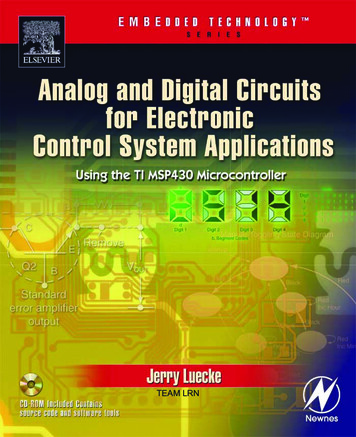


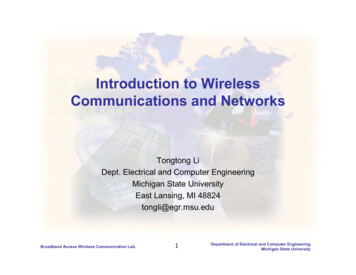
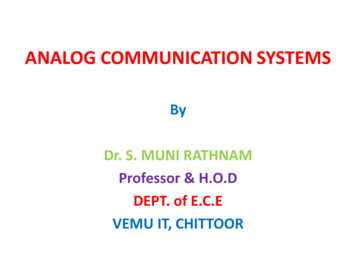
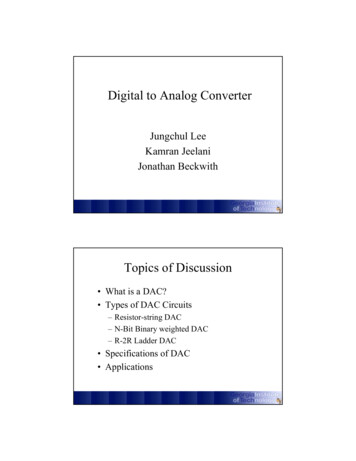

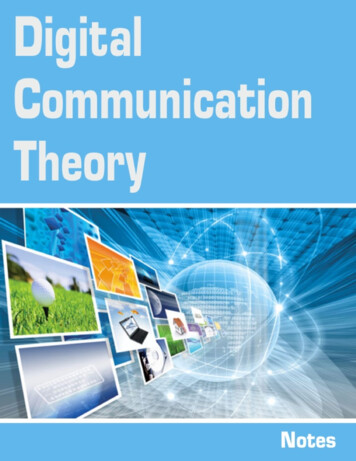
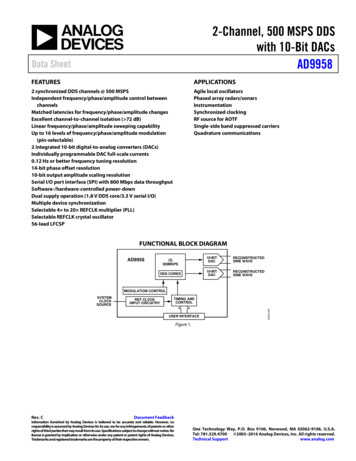
![The Design of a Comparator [The Analog Mind]](/img/21/br-sscm-4-2020.jpg)